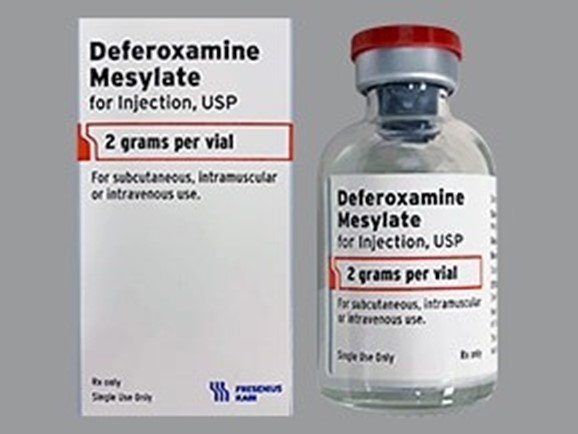A nurse at a pediatrician's office is contacted by a parent whose child just ingested half a bottle of vitamins with added ferrous sulfate.
Which of the following instructions should the nurse provide to the parent?
Bring the child to the office for a rapid infusion of deferoxamine.
Give the child syrup of ipecac.
Contact the poison control center.
Provide a high-carbohydrate meal.
The Correct Answer is C
In the event of a potential poisoning, the first step should be to contact the poison control center for guidance on how to proceed.
Choice A is not correct because rapid infusion of deferoxamine is not the first step in managing iron overdose.
Choice B is not correct because syrup of ipecac is no longer recommended for use in cases of poisoning.
Choice D is not correct because providing a high-carbohydrate meal is not an appropriate intervention for iron overdose.

Nursing Test Bank
Naxlex Comprehensive Predictor Exams
Related Questions
Correct Answer is ["A","G"]
Explanation
A. Teach caregivers to change diapers when wet.
✅ Correct. Prevents skin breakdown and diaper dermatitis.
B. Have caregivers administer 16 oz of water after each diarrhea stool.
❌ Incorrect. Infants should not get plain water in such amounts. Risk of water intoxication & electrolyte imbalance. Oral rehydration solutions (ORS) or breast milk/formula are recommended instead.
C. Cleanse the diaper area with soap and water.
❌ Incorrect. Harsh soaps can irritate the skin. Best practice: gentle cleansing with warm water or mild wipes, and barrier ointment if needed.
D. Collect nasal drainage for culture and sensitivity.
❌ Incorrect. Only done if ordered and if infection is suspected. At follow-up (Visit #2), infant is afebrile and stable—no need for culture.
F. Teach caregivers to apply talcum powder to creases.
❌ Incorrect. Talcum powder is contraindicated in infants (risk of aspiration & respiratory issues). Barrier creams preferred.
G. Use a nasal aspirator after feedings.
✅ Correct. Safe and effective to clear nasal secretions and prevent aspiration or feeding difficulties.
Correct Answer is C
Explanation
In the event of a potential poisoning, the first step should be to contact the poison control center for guidance on how to proceed.
Choice A is not correct because rapid infusion of deferoxamine is not the first step in managing iron overdose.
Choice B is not correct because syrup of ipecac is no longer recommended for use in cases of poisoning.
Choice D is not correct because providing a high-carbohydrate meal is not an appropriate intervention for iron overdose.

Whether you are a student looking to ace your exams or a practicing nurse seeking to enhance your expertise , our nursing education contents will empower you with the confidence and competence to make a difference in the lives of patients and become a respected leader in the healthcare field.
Visit Naxlex, invest in your future and unlock endless possibilities with our unparalleled nursing education contents today
Report Wrong Answer on the Current Question
Do you disagree with the answer? If yes, what is your expected answer? Explain.
Kindly be descriptive with the issue you are facing.
